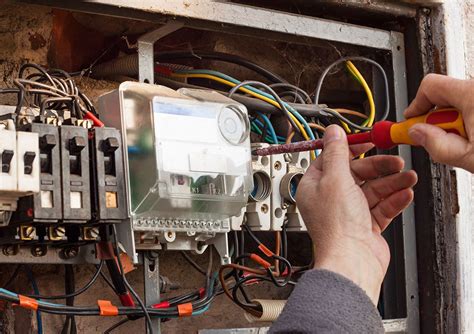Quality technical support for electrical industry solutions.
Quality technical support for electrical industry solutions.
Blog Article
Top Tips for Effective Electrical System Troubleshooting
Repairing electrical systems requires a systematic approach, based in a comprehensive understanding of electrical principles and safety procedures. By familiarizing oneself with circuit elements, using necessary devices, and sticking to an organized assessment approach, experts can successfully recognize and resolve concerns. Nonetheless, the nuances of reliable fixing prolong beyond simple technical understanding; comprehending how to document findings and prioritize safety can considerably influence results. As we explore these vital components better, it becomes clear that grasping this procedure is not just useful yet important for success in the area.
Understand the Essentials
Understanding the basics of electric systems is important for effective troubleshooting, as a strong structure allows technicians to diagnose and resolve issues extra efficiently. An extensive understanding of electrical concepts, such as voltage, existing, resistance, and power, is critical in recognizing the source of problems. Voltage is the electrical possible distinction that drives current with a circuit, while resistance opposes the flow of existing, influencing the general functionality of the system.
Experience with circuit parts, including resistors, capacitors, diodes, and switches over, is also extremely important. Each element plays a distinctive function in circuit habits and can influence performance when malfunctioning. In addition, understanding collection and parallel circuit setups is crucial, as these setups influence the distribution of voltage and existing within the system.
In addition, expertise of safety and security protocols is essential. Service technicians must be conscious of potential dangers, such as shock and short circuits, to apply safe troubleshooting methods. By understanding these fundamental principles, service technicians improve their ability to carry out effective diagnostics and repair services, ultimately leading to improved efficiency and reliability of electrical systems. This foundational knowledge is the cornerstone of effective repairing endeavors.
Gather Necessary Tools
Efficient troubleshooting of electrical systems calls for the right collection of tools to detect and fix concerns properly. Necessary tools consist of a multimeter, which measures voltage, present, and resistance, enabling for precise analyses of electrical components.
Furthermore, protected hand tools such as screwdrivers, pliers, and cord strippers are crucial for safely controling electric connections. It is also recommended to have a circuit tester accessible to validate the existence of voltage in electrical outlets and cables. For more complicated systems, a thermal imaging electronic camera can help detect overheating components, suggesting potential failings.
Comply With an Organized Strategy
Having collected the appropriate devices, the following action in troubleshooting electric systems is click over here to comply with a methodical strategy. A systematic strategy ensures that technicians can determine mistakes effectively and precisely, decreasing downtime and avoiding unnecessary repair work.
Begin by evaluating the system's schematic layouts and requirements. Recognizing the layout and functional specifications will offer context for identifying concerns. Next, isolate the trouble area by utilizing a procedure of removal. This includes checking each component systematically, starting from the source of power and functioning towards the tons.
Make use of screening devices, such as multimeters and oscilloscopes, to collect objective information regarding voltage, current, and resistance at numerous points within the system. This empirical evidence will certainly direct your troubleshooting efforts and aid to verify or eliminate possible sources of failure.
In addition, think about environmental variables that may influence the system's efficiency, such as temperature variations or wetness access. A detailed evaluation of circuitry, links, and components will certainly guarantee that all opportunities are represented.
Record Your Findings
Comprehensive documents is important in the fixing procedure of electric systems. This method not just aids in recognizing the origin reason of the trouble yet additionally serves as a referral for future troubleshooting efforts.

Furthermore, preserving a log of parts changed or repair services carried out is indispensable. This info supports supply monitoring and can assist evaluate the longevity and dependability of specific components.
Ultimately, the documentation procedure ought to be complete yet concise, making it possible for easy access and evaluation - electrical system troubleshooting. By prioritizing thorough paperwork, specialists can create a browse this site useful expertise base that not only aids in existing troubleshooting however also equips future upkeep efforts, consequently boosting total system reliability

Prioritize Safety Measures
Identifying the intrinsic risks connected with electrical systems is vital for making sure safety during troubleshooting. Electric shock, burns, and equipment damages are simply a few of the potential dangers that technicians face. Prioritizing precaution is not only a legal commitment but also an ethical essential that safeguards both the service technician and the surrounding setting.
Before beginning any kind of troubleshooting job, specialists must wear suitable personal safety equipment (PPE), including shielded handwear covers, safety glasses, and flame-resistant clothes. Making sure that the workplace is dry and complimentary of mess can significantly reduce the risk of mishaps. It is important to de-energize circuits before beginning any work, verifying that they are not live through the use of a multimeter or voltage tester.
Establishing clear interaction methods with staff member is likewise vital; this ensures that everyone knows possible threats and the standing of the electrical system being worked with. Last but not least, having an emergency situation feedback strategy in position can show important in the occasion of a case. By focusing on precaution, technicians can see this here properly alleviate risks and foster a more secure work environment.
Conclusion
Reliable electrical system repairing depends on a comprehensive understanding of essential concepts and a methodical approach. Prioritizing safety procedures guarantees the wellness of people entailed and the stability of the electrical system.
Report this page